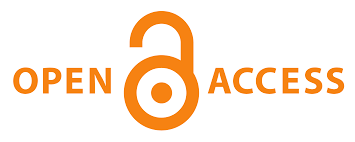Utilizing Narrative Text as a Means of Incorporating Literature into English Language Teaching to Enhance Students' Listening and Speaking Skills
Main Article Content
Azizatul Khoir
Aurel Keisha Jessenianta
Wahyu Indah Mala Rohmana
This study explores the efficacy of using narrative texts to enhance students' speaking and listening skills in English Language Teaching (ELT). Employing a qualitative descriptive method, the research involved interviews with English teachers and two junior high school students, investigating the integration of narrative texts in ELT for bolstering listening and speaking proficiencies. The primary objective was to identify obstacles encountered by educators and students when employing narrative texts as a tool to cultivate speaking and listening skills. Findings indicate that integrating narrative texts presents a promising pedagogical approach, fostering collaborative learning, critical thinking, and enhanced linguistic abilities. Despite challenges, such as instructional refinement and overcoming learning obstacles, this research underscores the immense potential of narrative texts in advancing students' language proficiency. Sustained efforts in tailoring instructional strategies and providing support are crucial to maximizing the benefits of utilizing narrative texts in ELT, paving the way for improved language acquisition.
Atta-Alla, M. N. (2012). Integrating Language Skills through Storytelling. English Language Teaching, 5(12). DOI: https://doi.org/10.5539/elt.v5n12p1
Budiyanto, S. M., Saleh, M., Rukmini, D., & Sofwan, A. (2018). Developing a Model of Teaching Speaking through Discussion and Presentation for Accounting Education Students of UMS and IAIN Surakarta in 2014/2015 and 2015/2016 Academic Year. Theory and Practice in Language Studies, 8(1), 74. DOI: https://doi.org/10.17507/tpls.0801.10
Dhillon, B. P. S., Herman, H., & Syafryadin, S. (2020). The effect of skimming method to improve students’ ability in reading comprehension on narrative text. Linguistics, 6(1), 77. DOI: https://doi.org/10.29300/ling.v6i1.2991
Eyyüp, M. (2013). Analysis of narrative texts in secondary school textbooks in terms of values education. Educational Research Review, 8(8), 361–366. DOI: https://doi.org/10.5897/err12.190
Fabriliani, A. A. (2019). The Use of Audio Visual Media in Learning Reading Comprehension of Narrative Text of The Eight E Grade Students at MTs Negeri 5 Jember Academic Year 2018/2019. (Doctoral dissertation, Universitas Islam Negeri Kiai Haji Achmad Siddiq Jember).
Friska, Y. (2018). Improving Students’ Reading Comprehension of Narrative Text Through Project Based Learning. ELT Echo: The Journal of English Language Teaching, 3(1), 47-58. DOI: https://doi.org/10.24235/eltecho.v3i1.2570
Kasimova, G. (2022). Importance Of Ice Breaking Activities In Teaching English. Zenodo (CERN European Organization for Nuclear Research). DOI: https://doi.org/10.5281/zenodo.7223440
Gilakjani, A. P., & Sabouri, N. B. (2016). Learners’ Listening Comprehension Difficulties in English Language learning: A literature review. English Language Teaching, 9(6), 123. DOI: https://doi.org/10.5539/elt.v9n6p123
Kartika, D. (2023). Implementation of Audio-Visual Teaching Media in Improving Students’ listening Comprehension: A Case on Teaching Method. Kartika | Journal of English Language and Education. DOI: https://doi.org/10.31004/jele.v8i2.428
Kirana, M. (2016). The use of audio visual to improve listening. English Education Journal, 7(2), 233-245.
Laraswati, M., Apriliaswati, R., & Arifin, Z. (2018). Improving Students’reading Comprehension Of Narrative Text Using Picture Books As The Media. Jurnal Pendidikan dan Pembelajaran Khatulistiwa (JPPK), 7(9). DOI: https://dx.doi.org/10.26418/jppk.v7i9.28697
Latifah, N., & Rahmawati, I. N. (2019). Teaching and learning narrative text writing through story mapping. English Education: Jurnal Tadris Bahasa Inggris, 12(1), 78–96. DOI: https://doi.org/10.24042/ee-jtbi.v12i1.4428
Listyani, L. (2019). The Use of a Visual Image to Promote Narrative Writing Ability and Creativity. Eurasian Journal of Educational Research, 80, 193-223. DOI: https://dx.doi.org/10.14689/ejer.2019.80.10
Lucarevschi, C. R. (2016). The role of storytelling on language learning: A literature review. Working Papers of the Linguistics Circle, 26(1), 24-44. https://journals.uvic.ca/index.php/WPLC/article/view/15309
McGehee, N. G. (2012). 18 Interview techniques. Handbook of research methods in tourism, 365.
Muchtar, A. A., Rahmat, A., & Herlina, H. (2020). Improving students’ narrative text writing ability through the picture and picture learning model. Indonesian Language Education and Literature, 6(1), 139. DOI: https://doi.org/10.24235/ileal.v6i1.5427
Nurizmawati, C., Apriliaswati, R., & Arifin, Z. (2015). The use of animation video as a media in teaching narrative text. Jurnal Pendidikan dan Pembelajaran Khatulistiwa (JPPK), 4(3). DOI: https://dx.doi.org/10.26418/jppk.v4i3.9435
Pathak, V., Bijayini, J., & Kalra, S. (2013). Qualitative research. Perspectives in Clinical Research, 4(3), 192. DOI: https://doi.org/10.4103/2229-3485.115389
Rahasya, M. K. (2017). Teaching good character in a narrative text through storytelling. Journal of English and Education, 5(2), 145-153. https://core.ac.uk/download/pdf/324206618.pdf
Rezki, A., Halim, A., & Sentosa, T. (2022). Motivating Students in Learning English Using Icebreaking. Al Lughawiyaat, 3(1). DOI: http://dx.doi.org/10.31332/alg.v3i1.3554
Setiyaningsih, A. (2013). The Use of Three Phases Technique to Improve Students’participation and Reading Comprehension in Narrative Text. ELT Forum: Journal of English Language Teaching (Vol. 2, No. 2). DOI: https://doi.org/10.15294/elt.v2i2.2408
Simerabet, I. (2019). Enhancing Students’ English Speaking Skill through Situational Dialogues; a Way towards Fluency (Doctoral dissertation, Université Ibn Khaldoun-Tiaret-).
Vural, H. (2013). Use of literature to enhance motivation in ELT classes. Mevlana International Journal of Education, 3(4), 15–23. DOI: https://doi.org/10.13054/mije.13.44.3.4
Wahya, T. N. I., Amrullah, M. I., & Rohmana, W. I. M. (2023). Drama as the way to integrate literature in English Language teaching. International Journal of English Learning and Applied Linguistics (IJELAL), 3(2), 88–94. DOI: https://doi.org/10.21111/ijelal.v3i2.9057
Xerri, D., & Xerri Agius, S. (2012). The use of literature in ELT. ETAS Journal, 30(1), 18-23.
Yadav, S. (2014). Recognizing the importance of literature and integration in ELT classes. International Journal of Education and Research, 2(9), 393-400. https://www.ijern.com/journal/2014/September-2014/34.pdf
Jannah, I. R., Yenni, C., Rahmi, T., & Alimnur, A. (2022). An Error Analysis of Students’ Translation In Narrative Text. JETLEE: Journal of English Language Teaching, Linguistics, and Literature, 2(1), 1-10. DOI: https://doi.org/10.47766/jetlee.v2i1.202
Kreminski, M., Dickinson, M., & Wardrip-Fruin, N. (2019). Felt: a simple story sifter. In Interactive Storytelling: 12th International Conference on Interactive Digital Storytelling, ICIDS 2019, Little Cottonwood Canyon, UT, USA, November 19–22, 2019, Proceedings 12 (pp. 267-281). Springer International Publishing. https://stars.library.ucf.edu/elo2020/asynchronous/proceedingspapers/10/




